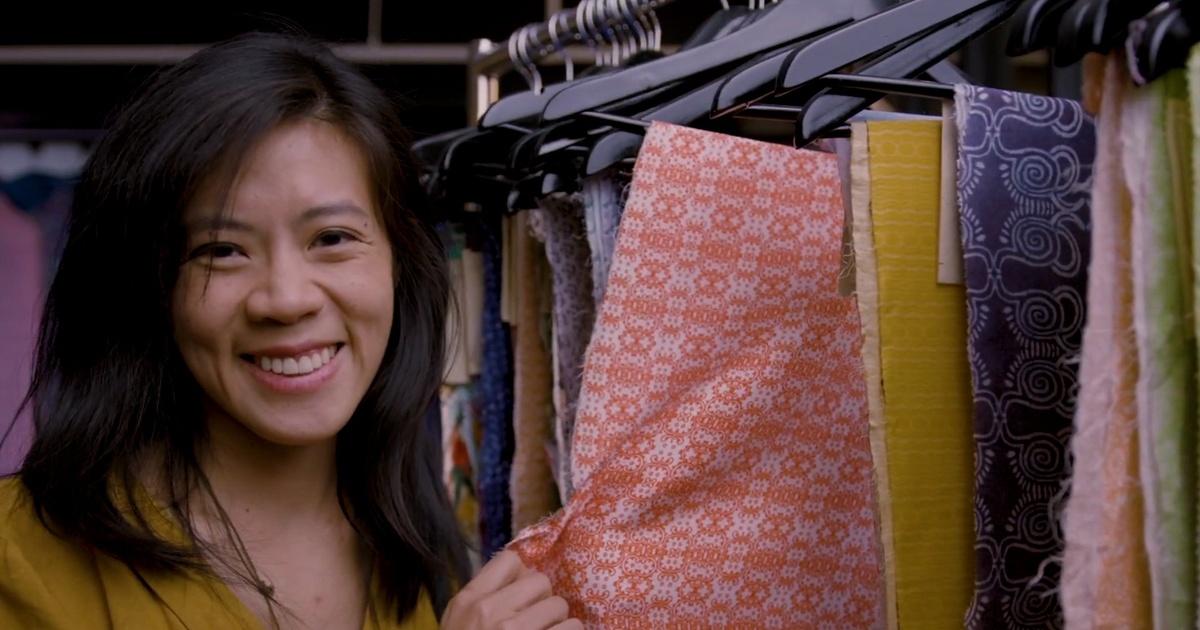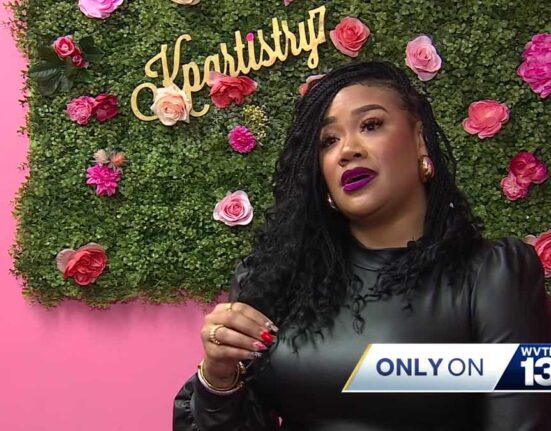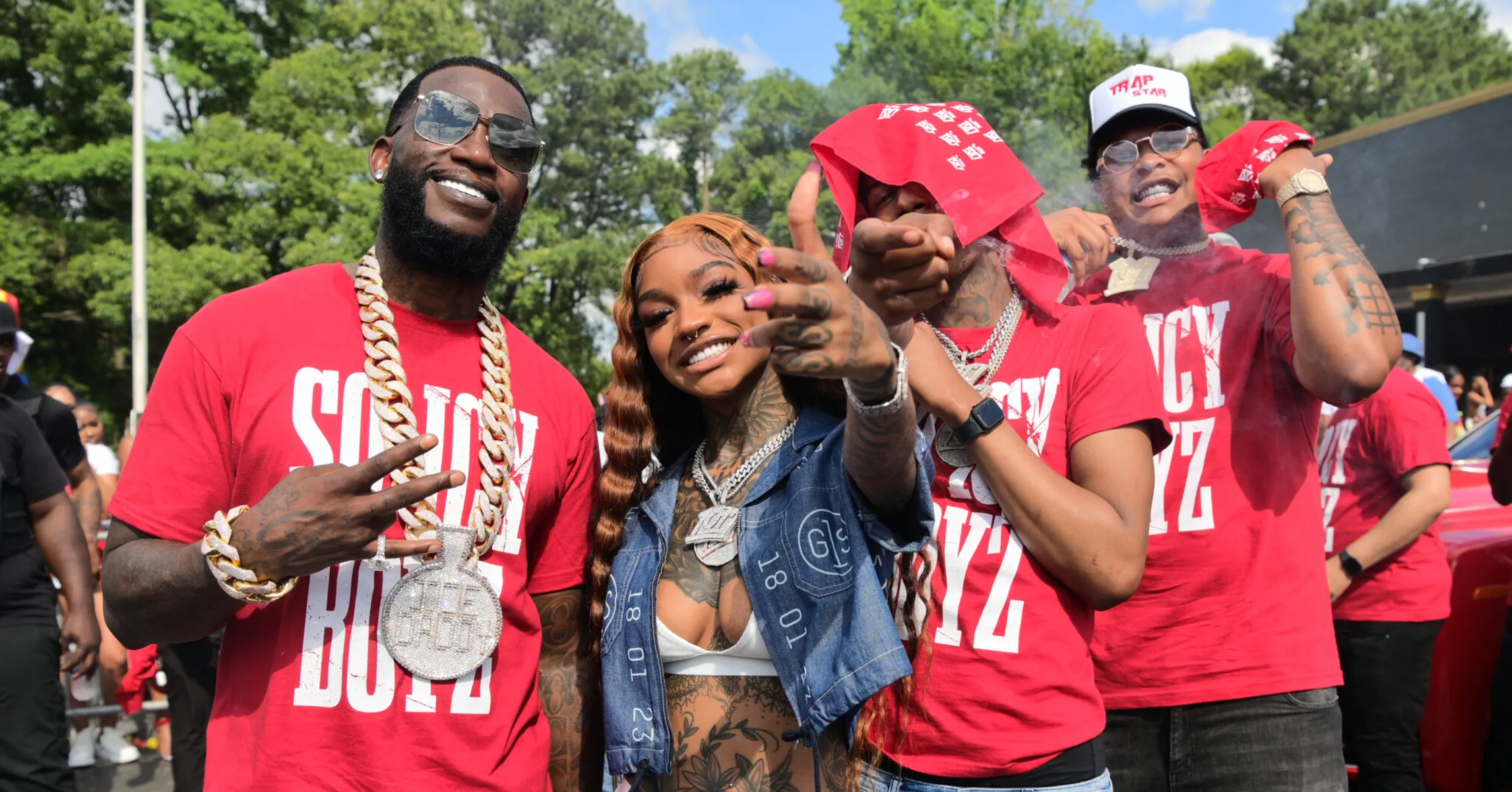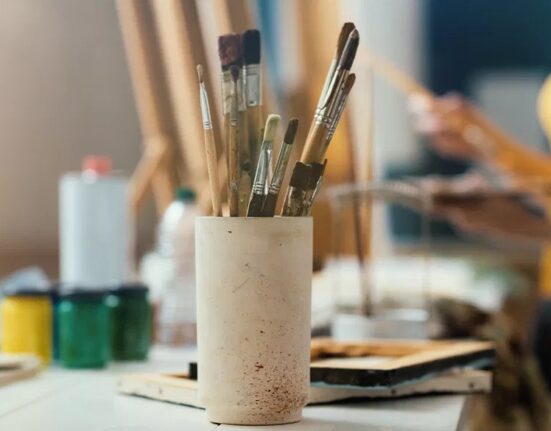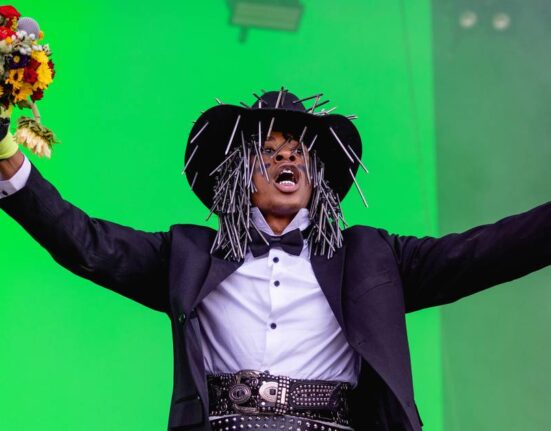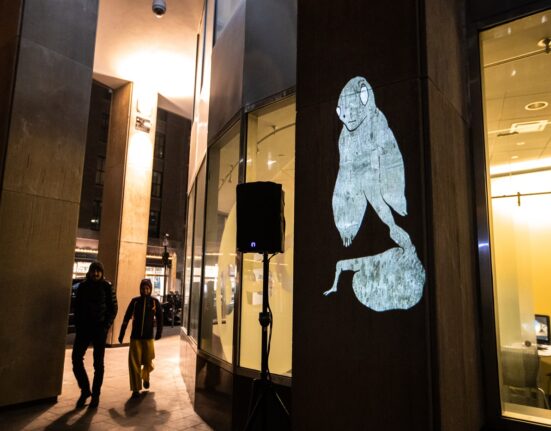Hui: I booked a one-way flight when I was 19 to India.
I didn’t want my parents to think I was going on a hippie-trail situation, so I found a landscape architect to work under in the city of Ahmedabad in Gujarat.
There was something that was really powerful about especially the creatives and the artists that I was meeting out in India.
There was a lot of ways of doing, being, and thinking, especially amongst Indigenous communities, that I had met in that time period that I wanted to learn more about.
So tonight is a beautiful night that has never been done before, which is we’re bridging communities that are often overlooked, unseen, often practicing artistic expressions and identities that are largely discriminated and bridging them to the global center of where culture is often influenced, which is Brooklyn, New York.
And we decided to enter the lens of creating influence for a lot of these artists and communities through streetwear.
Streetwear often sets the pulse for where Gen Z and Gen Alpha wants to follow after, and we really see coolness as a currency to also have communities understand how cool just exactly who they are.
I think streetwear, to me, means you in the product despite what the world sees, and it’s bringing your voice to life and knowing, staying true to yourself and your brand, you can build it at the core, at the community level, at the street level.
And that’s what I see streetwear as and what we’re doing.
I personally come from a skateboard-and-graffiti background.
I love launching at a core level and building community.
So for me tonight, this is exactly what we’re doing.
We’re bringing two communities, Roots Studio, GBA together, celebrating this amazing work, and doing it because the creative unseen, meaning the people that are creating these amazing pieces that never get a chance to shine, here’s the opportunity.
Hui: When I spent a lot of my 20s, actually as a researcher and anthropologist working with Indigenous artists and communities, one of the things that I remember hearing was that the artists were always saying, “People don’t think about our work as relevant because it’s not cool.
It’s something that’s fading away with the older generation.”
So that struck me that coolness is often a currency of what drives culture.
So it took me on this journey of seeing, how do we take all this amazing work, all this amazing knowledge that is actually the core of what sustainability is as people who are often connected to farming practices, who are living in harmony with the planet and also in community, and how do we take all of that knowledge and make it relevant and cool?
So tonight is really about an experimental collision, taking these artists that we’ve been working with for more than eight, nine years and saying, “Hey, we can put your artwork on amazing streetwear and collaborate with amazing, influential, and established streetwear designers like Camella, Phillip Lim, NOAH, who are all our collaborators for the next few drops, as well.
I really love what she’s doing, working with Indigenous communities and, like, uplifting their art forms ’cause I feel like a lot of this art gets lost in translation.
Like, why not just, like, collaborate and bring in the artists and embrace the artist and have equal exchange with the artist?
This is creativity.
It’s rejuvenation.
You know, Phillip and I are about to launch and do our September fashion show, and to be able to be reminded and how fortunate we are to be able to do a show and the creative energy.
This is just another reminder of our insane, beautiful community that we love and we love to be part of.
Without diversity and inclusion, there would not be American fashion because America is made up of this.
I grew up with a sewing machine, maybe not as high-tech as this one, maybe not so automatic, but it is the sewing machine of my mom’s that fed me and my family, and we were able to come to United States and to be able to continue the entire craft, not just from making of the product, but to be able to build a brand and to be able to polish our craft and to be able to kind of assemble the type of people that we want in our company and we want in our community, that’s unstoppable.
When I was with The Explorers Club 50, I was, like, “This is the type of people I need to be around every day to feel normal.”
These are, really, people that I look up to, and that’s something that, I think, for people who are trying to really push the unknown, really follow their heart, it’s really important to be around people like that.
We bridge these artisan communities to large brands around the world, and make sure that the artists are also compensated and get a royalty for the work that is being used in the collection.
We have over 4.2 million products in distribution with partner brands that are across American retail.
I just remember waking up every day and saying, “If what I’m doing today feels aligned and congruent with my heart and my values, I’ll keep doing it.
And as long as my skills are adjacent to what I’m putting my hands to every day, I’m going to keep doing it.”
That’s something that we’re trying to do at Roots Studio, which is subvert the value in which so many Indigenous communities have been historically oppressed upon by dominant majorities and say, “Hey, like, there’s brilliance, there’s beauty, and then there’s treasure in terms of their voices, their creative expression,” and then bringing it out to the forefront of the world from there.
♪♪ ♪♪

